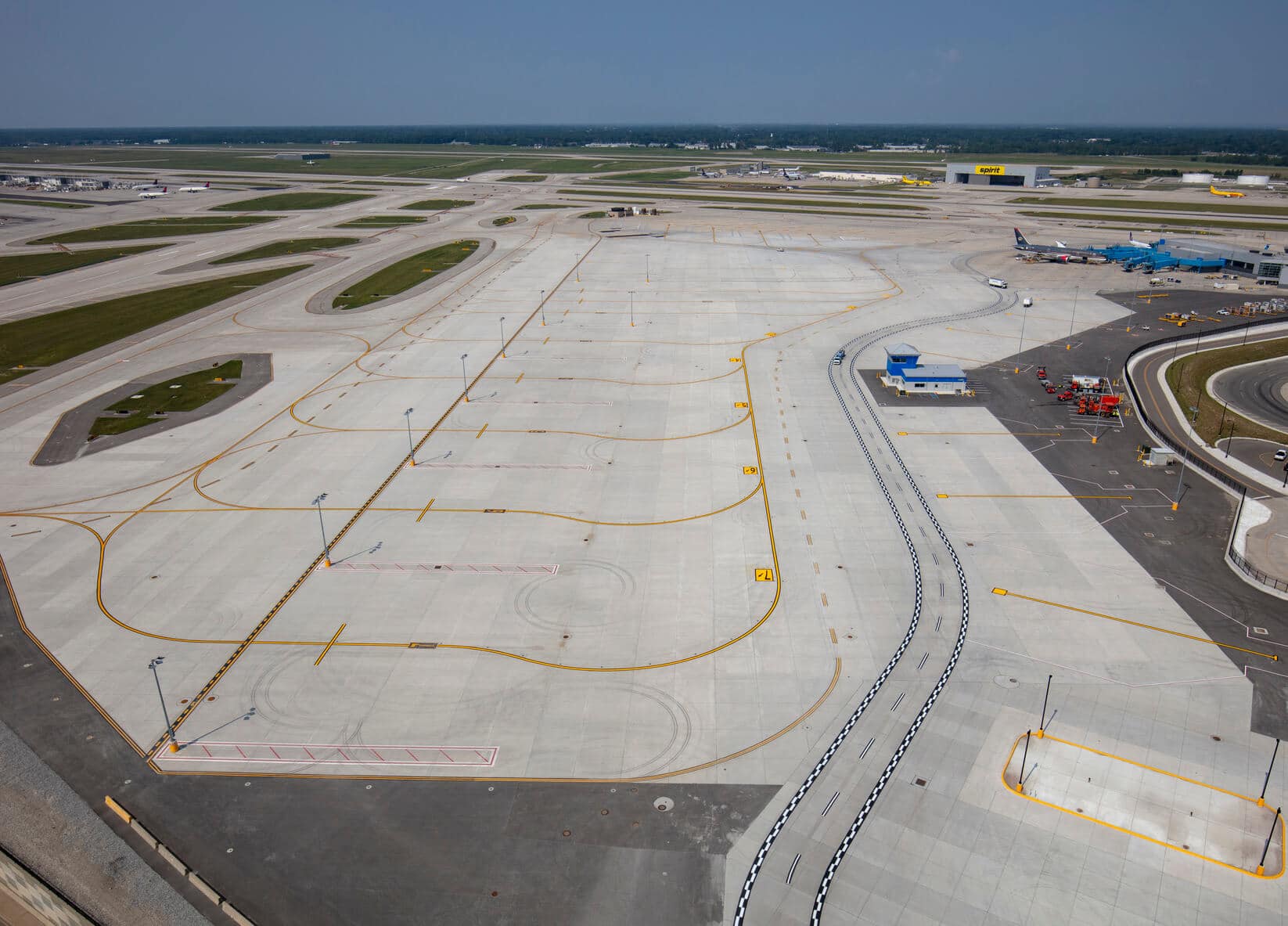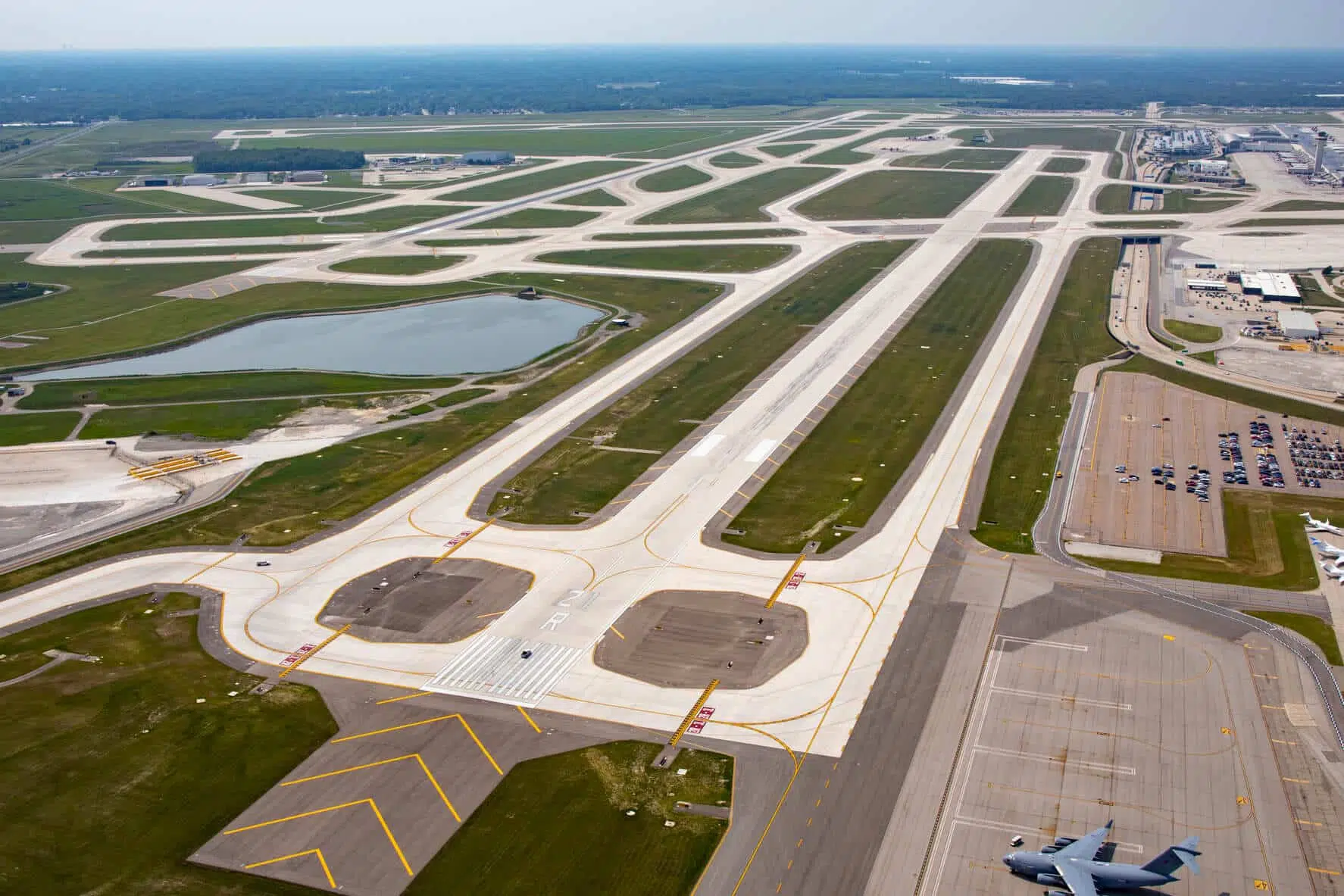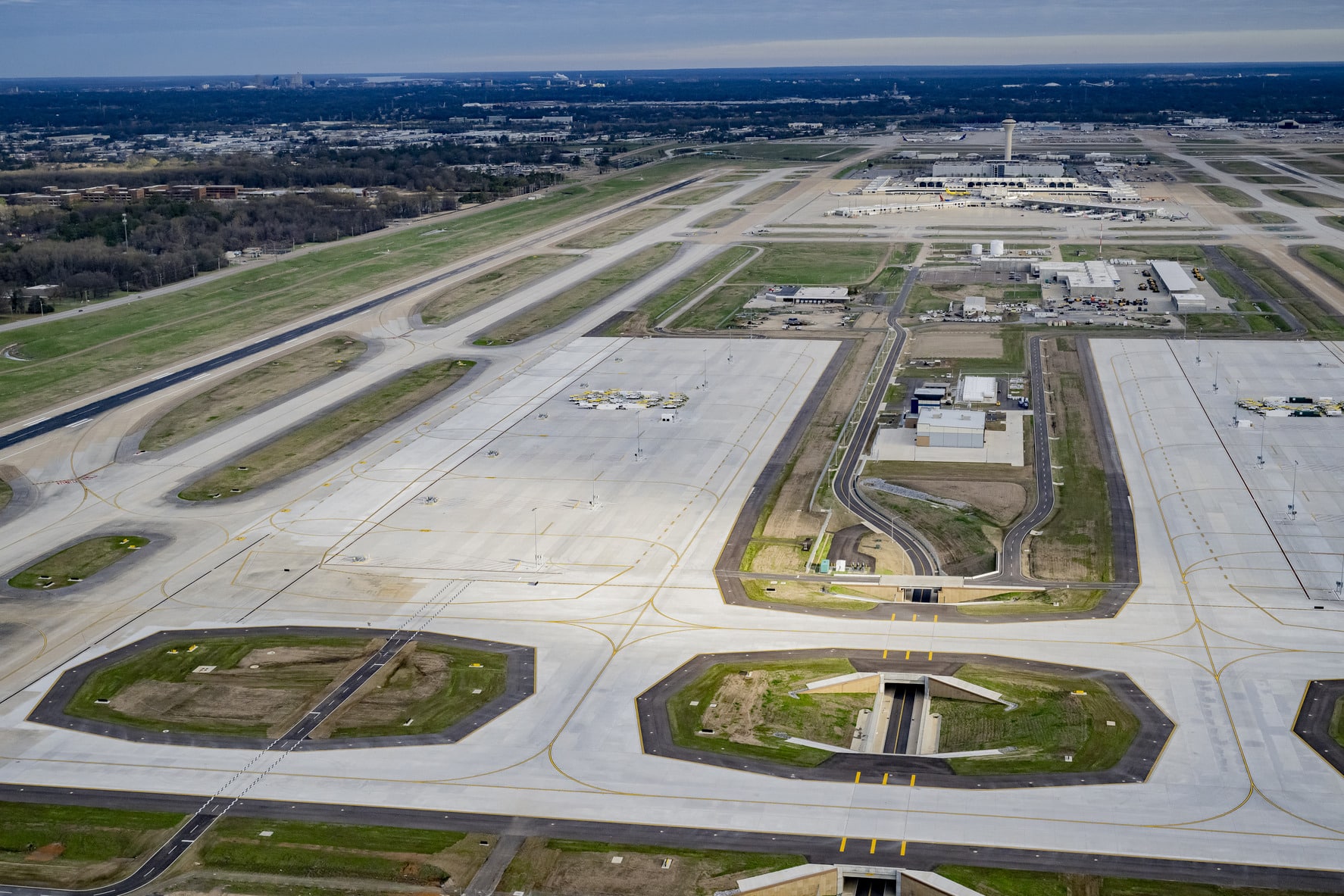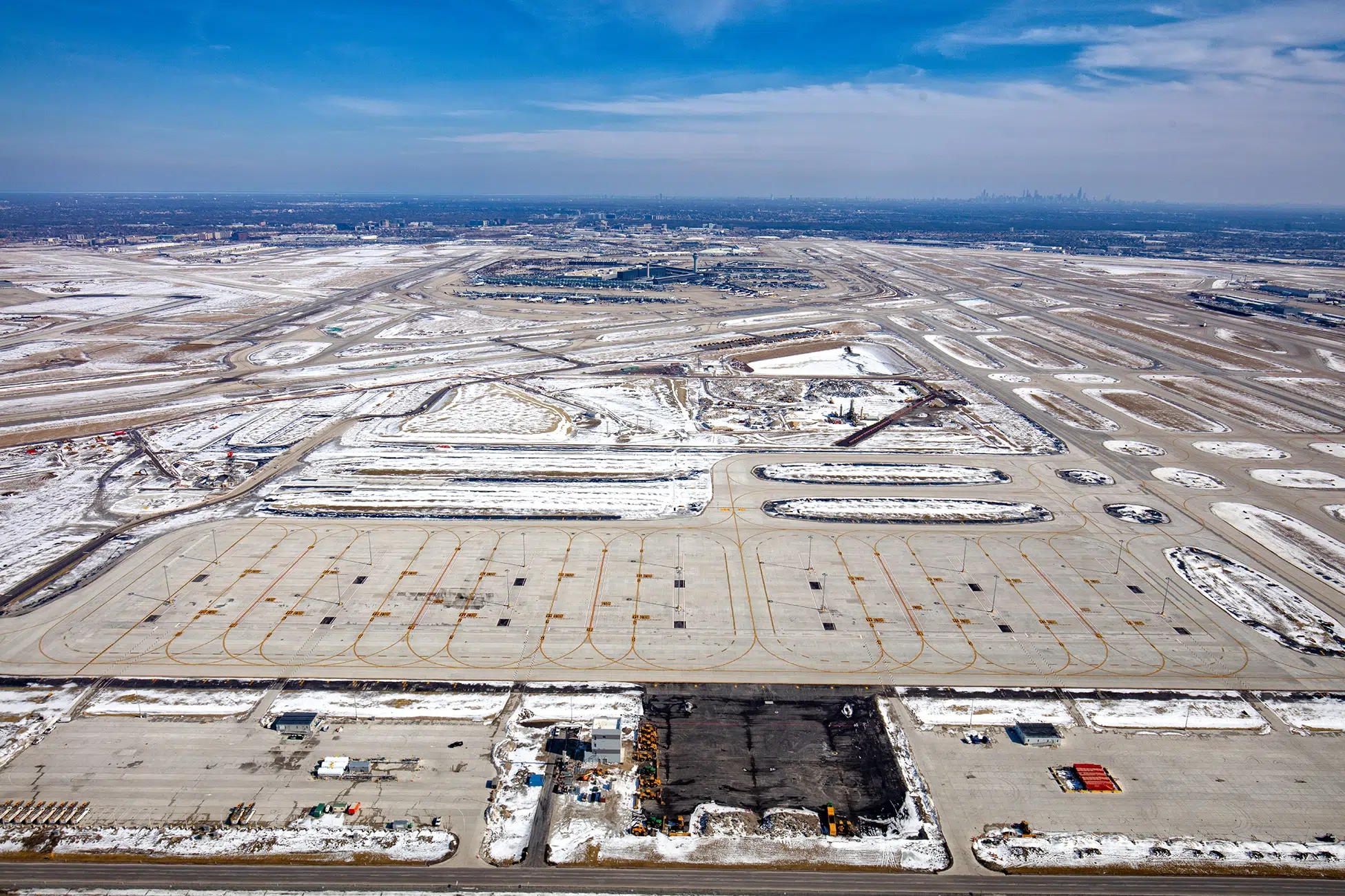Aircraft Deicing Facilities
Aircraft deicing removes frost, ice, slush, or snow from an aircraft, applying anti-icing protection to the aircraft’s surfaces for safer, more efficient travel. At many airports, essential deicing operations are performed at the gates and designated ramp areas of the terminal core. This practice can exacerbate already constrained gate capacity, creating bottlenecks and increased delays. Programming and developing a centralized deicing facility (CDF) can help airports alleviate numerous logistical and operational challenges—and provide year-round benefits.
CDFs provide significant improvements during the winter months, and they also provide relief to airfield operations during the summer months when used to stage aircraft that are subject to ground holds due to inclement weather.
Kimley-Horn understands the importance of exploring all feasible design options. We provide our clients with the information necessary to make informed decisions about design alternatives in the layout and functionality of a deicing pad. The aircraft deicing facilities we’ve designed serve today’s needs while maintaining the flexibility to make modifications necessary for future growth and changes in deicing regulations.
Glycol Collection Expertise
While treatment of deicing fluids may not be required at your airport today, we design facilities to allow for the addition of future treatment, recycling, and fluid removal options. We are well-versed in the methods used to collect glycol-impacted water and work with airports to determine the best solution for their unique situations. In some cases, when faced with stringent federal or local standards for deicing collection, our experts have helped airports design and build facilities that minimize the amount of glycol-impacted water that enters the normal drainage system, stormwater system, and ultimately, local waterways.
Operational Efficiency
Additional considerations that improve aircraft deicing operational efficiency and increase safety include:
- A control/maintenance facility (Deice House)
- Electronic communications system with electronic message boards (for conveying information to pilots for discretionary decision making)
- Thermal imaging cameras (for maintaining visual confirmation of people and equipment in low visibility conditions)
- Independently controlled in-pavement lighting (for increasing pilot situational awareness)
- High mast lighting (for low light deice operations)
For more information about our aircraft deicing facility expertise, submit a service inquiry or contact your Kimley-Horn partner.
Related Services




